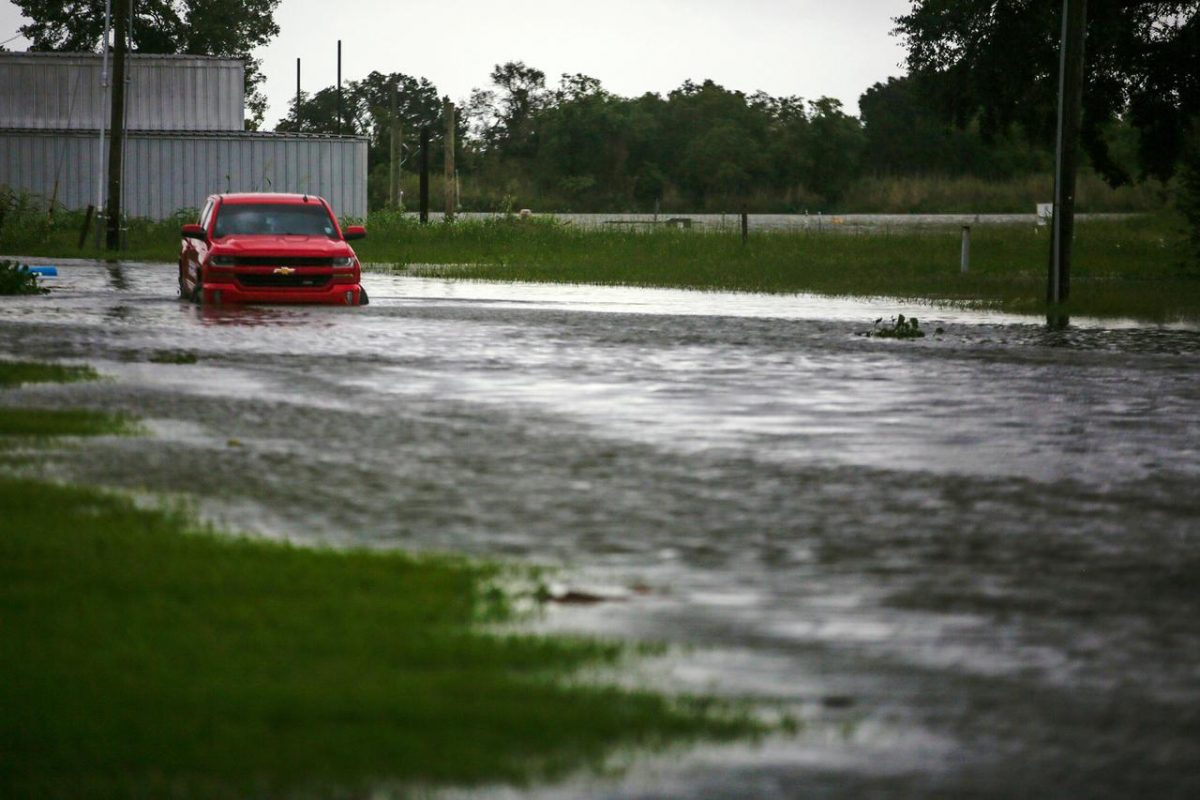HOUSTON, Texas, (Reuters) – Hurricane Laura made landfall early today in southwestern Louisiana as one of the most powerful storms to hit the state, with forecasters warning it could push a massive wall of water 40 miles inland from the sea.
Laura made landfall just before 1 a.m. as a Category 4 storm packing winds of 150 mph (240 kph) in the small town of Cameron, Louisiana, the National Hurricane Center (NHC) said.
It rapidly weakened to a Category 2 storm this morning with maximum sustained winds of 105 mph (168 kmh) as it moved north and battered southwest Louisiana, a marshy region particularly prone to storm surge and flooding.
Besides threatening life, the storm was barreling toward the heart of the U.S. oil industry, forcing oil rigs and refineries to shut down production.
Laura’s winds tore through Lake Charles, Louisiana all night, ripping roofs from buildings and shattering glass windows, videos posted to Twitter showed.
The city of 78,000 was seeing sustained winds of 85 mph (137 kph) and gusts up to 128 mph (206 kph), in the hour after landfall, the NHC said.
“This is one of the strongest storms to impact that section of coastline,” said David Roth, a forecaster with the National Weather Service. “We worry about that storm surge going so far inland there because it’s basically all marshland north to Interstate 10. There is little to stop the water.”
Officials across the hard-hit area said it would be several hours before they could get out to begin search and rescue missions. Downed trees blocking roadways were expected to be the biggest immediate challenge for rescuers.
“Catastrophic storm surge, extreme winds and flash flooding continues in portions of Louisiana,” the NHC said in an early Thursday bulletin.
The oil-refining town of Port Arthur was just west of where Laura made landfall. The city of 54,000 was a ghost town late on Wednesday, with just a couple of gas stations and a liquor store open for business.
“People need their vodka,” said Janaka Balasooriya, a cashier, who said he lived a few blocks away and would ride out the storm at home.
Just hours before Laura smashed into the coast, Port Arthur resident Eric Daw hustled to fill up his car at one of the few gas stations still open.
He said he had wanted to evacuate earlier but lacked money for gas as he was waiting on a disability payment. Daw was headed to a shelter in San Antonio, a 4-1/2-hour drive, where instead of worrying about the storm he has to contend with COVID-19, echoing the concerns of many others.
“They say we are all supposed to socially distance now,” he said. “But how am I supposed to socially distance in a shelter?”
‘WALL OF WATER’
About 620,000 people were under mandatory evacuation orders in Louisiana and Texas.
The storm surge could penetrate inland from Sea Rim State Park, Texas to Intracoastal City, Louisiana, and could raise water levels as high as 20 feet (6 meters) in parts of Cameron Parish, Louisiana, the NHC said.
“To think that there would be a wall of water over two stories high coming on shore is very difficult for most to conceive, but that is what is going to happen,” said National Weather Service meteorologist Benjamin Schott at a news conference on Tuesday. Most of Louisiana’s Cameron Parish would be under water at some point, Schott added.
Laura could also spawn tornadoes on Thursday over Louisiana, Arkansas and western Mississippi and was expected to drop 6 to 12 inches of rain over the region, the NHC said.










